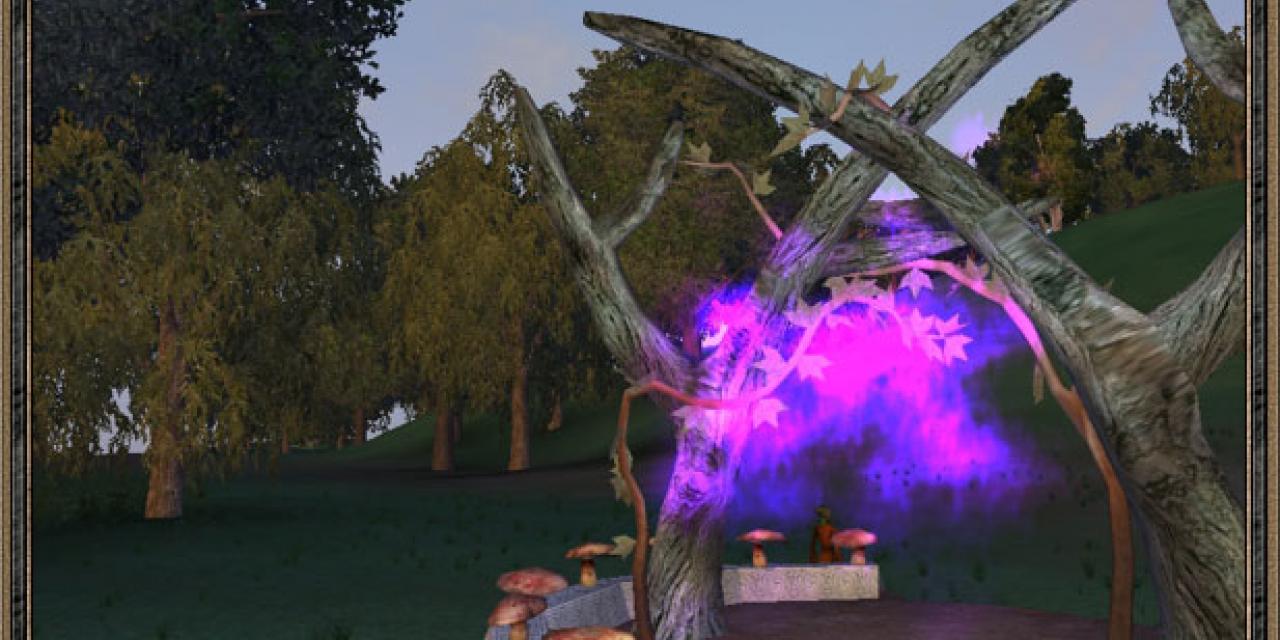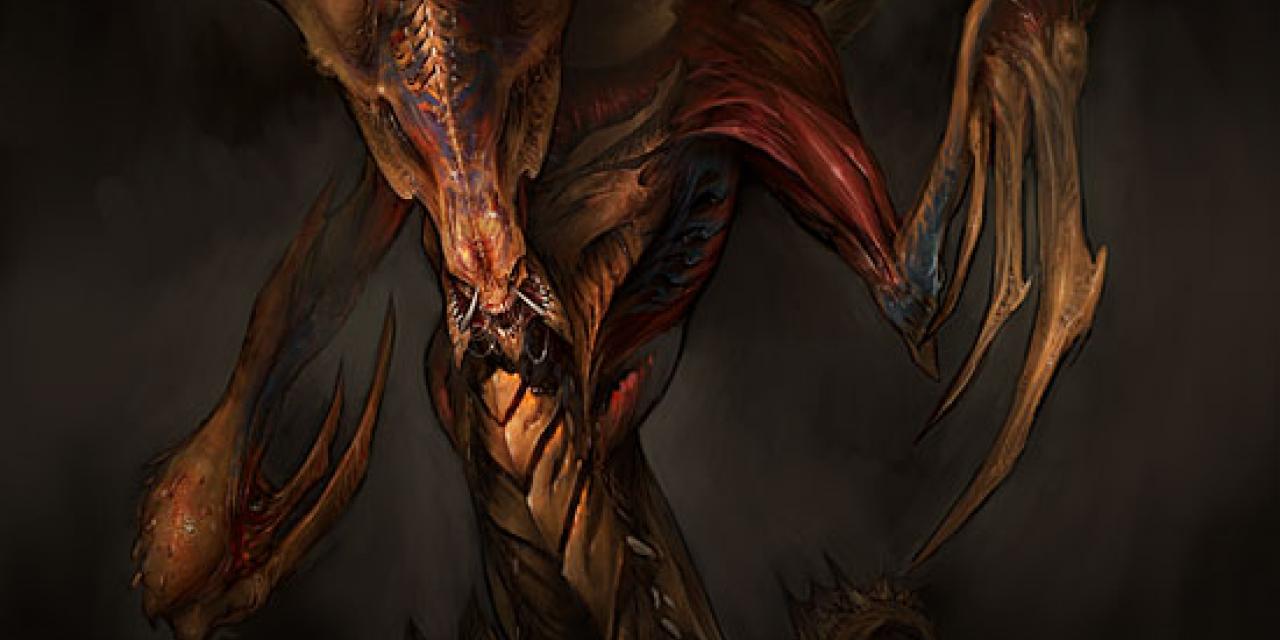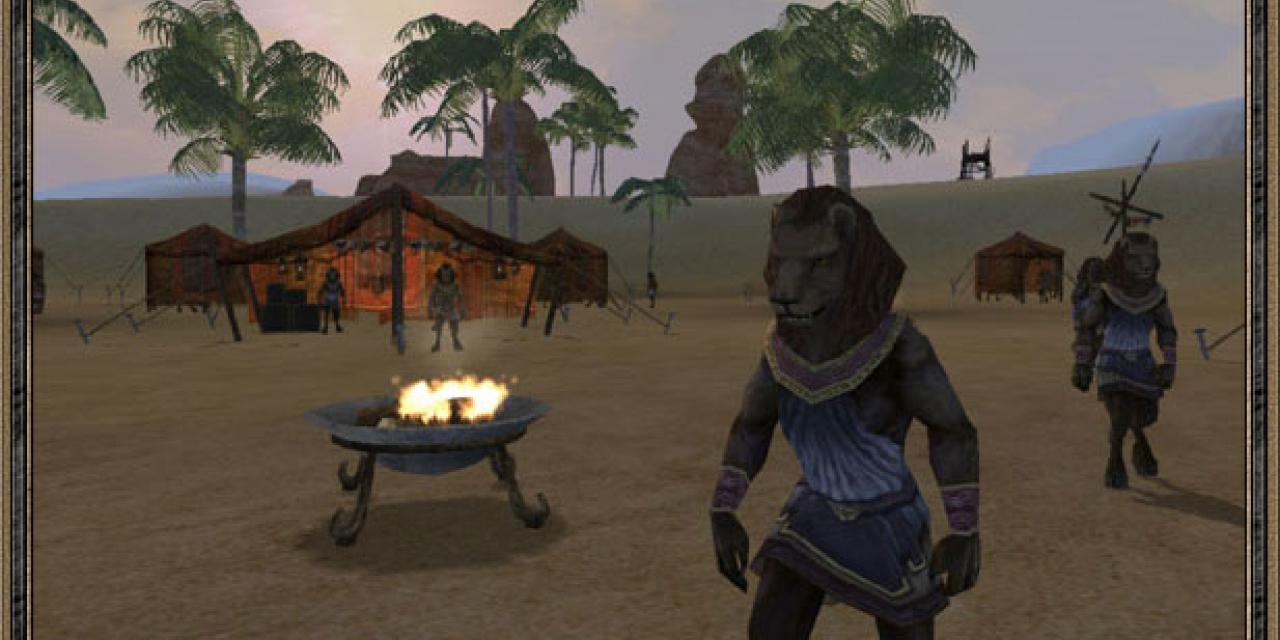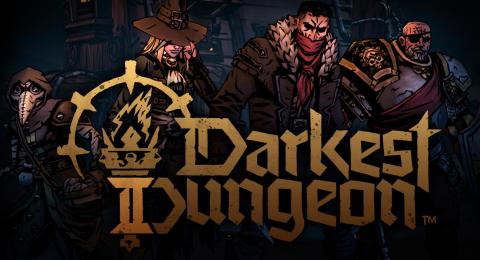




- publisher: Mythic Entertainment
- developer: Mythic Entertainment
Dark Age of Camelot is a massively multi-player online role-playing game conceived and developed by Mythic Entertainment. Set in the Kingdom of Albion in the years immediately following the death of King Arthur, players of the game enter a world in chaos, where Arthur's peace has been shattered and dark forces threaten the Kingdom. Unlike traditional role-playing games in which a player's greatest challenge is fighting computer-controlled monsters, players in Camelot will come face-to-face with their greatest challenge yet, other players. In Camelot, players must choose to be members of one of the three Realms that are striving for mastery in this chaotic world: The Britons, the Celts, or the Norse. The Britons are the former kingdom of Albion, once ruled by the great King Arthur. The Celts are from the wild and magical western island of Hibernia. The Norse are the large barbarians from the lands to the north of Albion.
[images]
Building upon the foundation laid by such great games as EverQuest, Asheron's Call, and Ultima Online, the game features 3D-accelerated graphics with movable camera, multiple class and race combinations, and has built in and balanced team Player vs. Player (PvP). Unlike its predecessors, in Camelot, PvP conflict is an integral part of a player's experience in the world, not an afterthought.
[images]
Players of this massively multiplayer online roleplaying game will assume the guise of a character from one of the three Realms: Albion, Midgard, or Hibernia. Each Realm has its own unique classes and races to choose from - as well as different abilities in combat and magic. Every character in a player's Realm is his friend - and everyone in an opposing Realm is an enemy that can be attacked on sight. The overriding goal of the game is to make sure that your Realm's Relics are safe in their keep - and to go on raids to enemy territory to try and steal their Relics and bring them home to your territory.
[images]
Each class in the game is specially created to perform a specific task - players can choose from fighters, rogues, magicians, clerics, and hybrids of both fighters and spellcasters. Each Realm's class and race choices come straight from the pages of the history and legends of that area of the world. Albion character classes and races come from Arthurian legends. Hibernians are taken from Celtic lore and legends. The Norse are familiar to anyone with even a cursory knowledge of Scandinavian mythology.
[images]
Dark Age of Camelot is designed to provide players with a general roleplaying experience while their characters are low and mid-level. However, upon achieving the higher levels in the game - just when other games get stale and players run out of things to do - characters in Dark Age of Camelot will embark on their player vs. player careers by participating in Realm invasions and by protecting their Realm's Relics from enemy thieves. This almost guarantees that the game will never become boring, even for long-time players.
Even though Camelot features PvP combat, it also will have an extremely detailed questing system that allows players to go on quests to get items, advance in guild level, learn new spells, and explore the world.
Camelot's questing system has several features that make quests non-repetitive and ensure that each player that does a specific quest will have a different experience. In most online RPGs, quest consist of going from step 1 to step 2 - talk to the NPC, find an object, give it to him, he gives you a note with more instructions on it, etc. These usually end up with a lot of l characters "camping" the same area waiting for a specific NPC to spawn so that they can kill it/talk to it/etc. This can often be frustrating to the players, especially if the NPC spawns rarely.
[images]
Camelot's extensive questing engine will alleviate these issues in several different ways. First, the steps in the quest will be randomly generated, so two players going on a quest for the same item will probably not do the same steps, and definitely not in the same order. Second, players on quests will have to fulfil earlier parts of the quest in order to get quest items off of NPCs. For example, if a player has to say a certain phrase to an NPC to get an item, the NPC will not respond to the correct phrase if the player has not done the previous steps on the quest. This will stop massive amounts of players camping all-important quest monsters, since they will to, personally, perform each step on the quest.
A special Questing Journal keeps track of the player's quests that have accepted, as well as list all completed ones. It will show the steps that have been done on a quest, and what the next step to be accomplished is. There's no more scribbling down esoteric phrases or notes - questing journal will manage all your quest information for you. This will alleviate the need for tedious note taking and the "what do I do with this piece of pottery?" that happens in other RPG games.
[images]
By combining these features, Camelot will offer a welcome change to players who want to fulfill their character's quests. By keeping track of each quest step for them, and by ensuring that they don't do every quest in the same way as every other player, Camelot will allow players to more fully enjoy their characters and their quests.
The Realms in Dark Age of Camelot are the Kingdom of Albion, home of the Britons, the Celtic Kingdom of Hibernia, and the Norse Kingdom of Midgaard. Players will be able to play characters in each of the Realms - each Realm's characters will specialize in different types of magic, different fighting techniques, and of course each will have geographically typical terrain. Midguard is full of fjords and ice, Albion is full of rolling hills and Roman ruins, and Hibernia is a wild land of deep forests, enchanted hills and magical beasts.
[images]
Each Realm is the possessor of a number of ancient magical Relics, which give bonuses to all members of that Realm - when the Relics are safely in their shrine. However, Relics can be stolen away by enemy raiding parties and taken to their shrines, making them stronger. When safely in shrine, Relics give moderate attack and damage bonuses to fighting races, and magical spellcasting bonuses to spellcasters. Any Realm that does not have its Relics fights at a disadvantage.
[images]
Relics must be protected at all costs from theft - this concept forms the core of the PvP conflict in Camelot. Relics come in all shapes and sizes and are based on each Realm's history and legends. Some of the ongoing quests in Camelot will be centered around discovering many lost Relics.
One of the biggest problems with other online RPGs is that a magic-using character is fun and exciting to play, but an Arms-wielding fighter usually has only a few options to keep combat fun and interesting. Camelot, however, will feature "combat styles", which are unique fighting moves that must be learned by fighting characters in much the same way that a spell casters has to learn new spells.
[images]
By studying the fighting styles of monsters and other players, fighters will find that some styles work better in some situations than in others. Fighting classes will be able to learn new styles by going on Quests, by advancing in their guild, or by gaining levels.
[images]
The game is slated to be complete by late summer 2001, with betas starting about five months before that.
(*note: This article is based on the FAQ information found at the Official Mythic Entertainment site, and the 'source' links).








